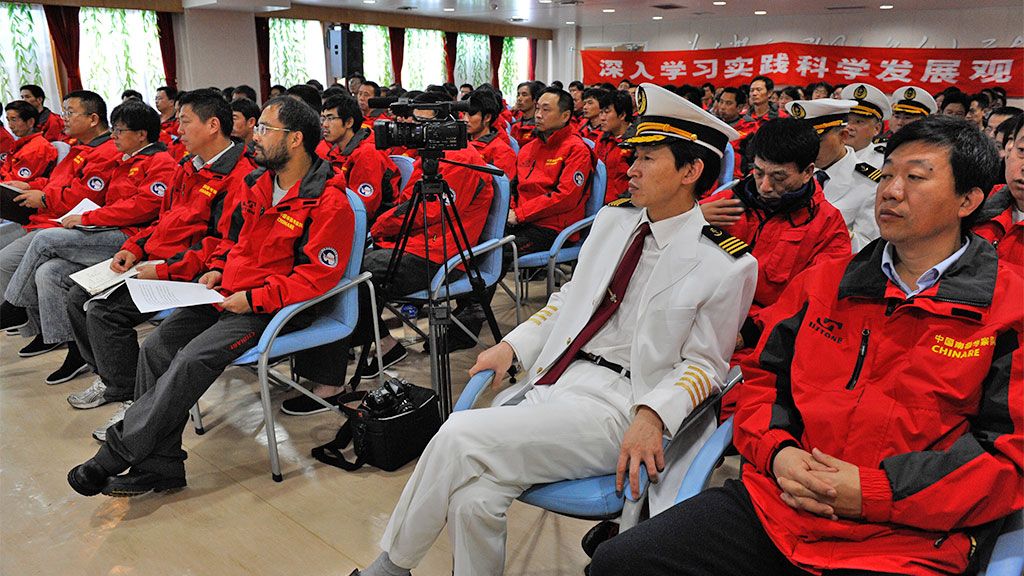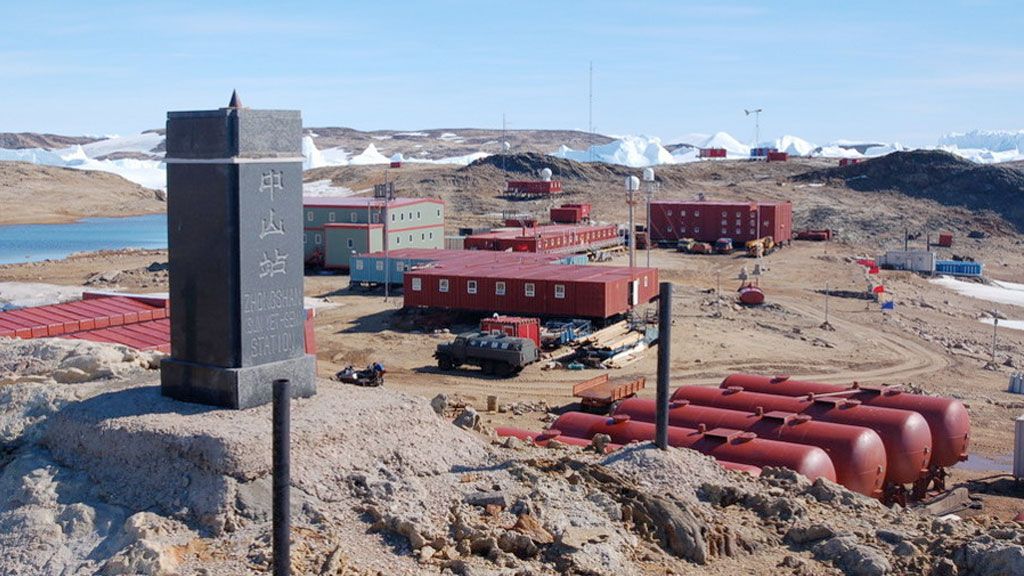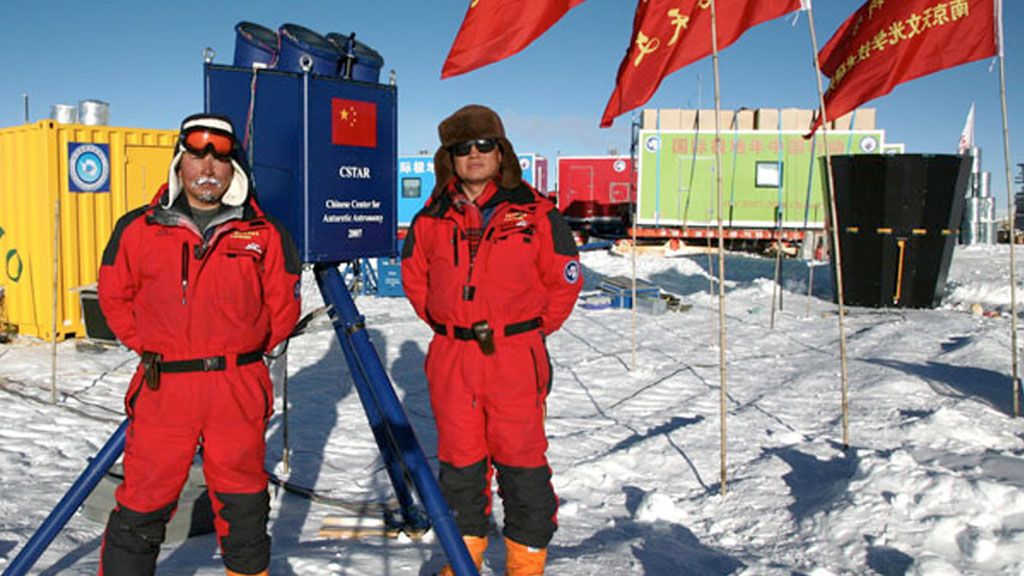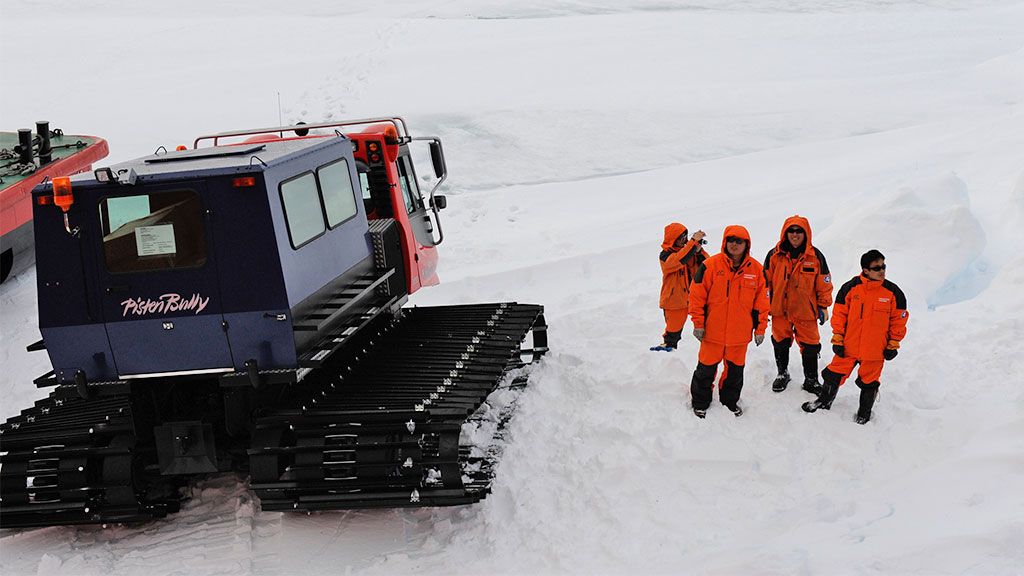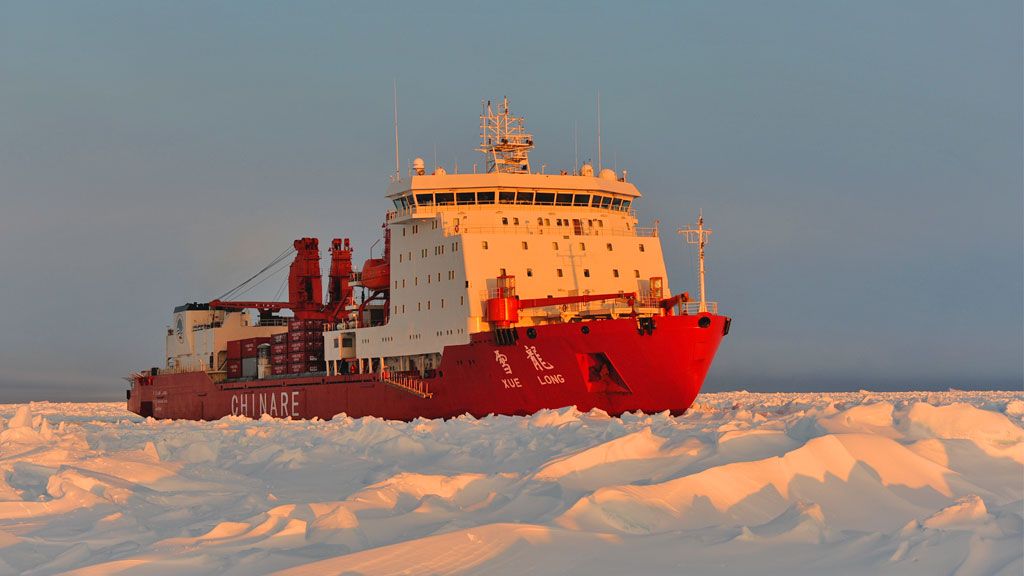Accompanying China to Antarctica
The 25th CHINARE expedition
© International Polar Foundation - Jean De Pomereu
It is a paradoxical, but arresting thought that the only continent without an indigenous human population has been the most apt at drawing peoples together. Starting with the Swedish-Norwegian-British expedition of 1949-52, and further reinforced by the International Geophysical Year (IGY) of 1957-58, the signing of the Antarctic Treaty in 1959, and now the International Polar Year (IPY) 2007-08, modern Antarctic research and exploration has had as much to do with national strategy, positioning and recognition, as with building international cooperation and partnerships in both polar science and logistics.
This backdrop of international goodwill comes into full focus as I sit writing this during the last months of the IPY 2007-08, on board the Chinese research and logistics ice breaker, Xue Long (Snow Dragon), bobbling somewhere in the middle of the Southern Ocean on its journey from Freemantle, Australia, to the Chinese Zhongshan station in the Prydz Bay coast of East Antarctica.
As the first foreign science writer/communicator to join a Chinese Antarctic expedition, I am benefiting from the freedom of exchange and openness that has become the hallmark of Antarctic research and collaboration - and this at a time when working together to understand the processes of our shared planet has never been more important.
Over the next six weeks, I will bear witness as the 25th CHINARE expedition and its 204 participants, lead by Professor Huigen Yang, carry out some of its 36 science programmes (in fields ranging from marine science to atmospheric physics); unload some 7,000 m3 of building and other materials in Antarctica; continue the ongoing renovation of Zhongshan station; and perhaps most importantly, wave goodbye to an "inland team" of 28 men as they set off in a convoy of heavily loaded snow tractors to build a research station at Dome Argus (Dome A), located some 1,200 kilometres inland at an altitude of 4,094 metres - an extreme and challenging endeavour by any Antarctic standard.
Dome A is the culminating point of the Antarctic Ice Sheet and one of the most strategic locations on Earth for climate and astronomical science (more on that in future reports). Kunlun, as the new station is to be named, will add to the two existing Chinese stations: Zhongshan in the Pridtz Bay coastal region of East Antarctica, and Great Wall station on King George Island at the northern tip of the Antarctic Peninsula. Not only will this third station help facilitate cutting edge science for years and decades to come, it will propel China to the very heart of the Antarctic map, in much the same way that the South Pole and Vostok stations (also located deep inland on the East Antarctic ice sheet) did for the U.S. and Soviet Union when they were first constructed during the IGY of 1957-58.
These missions will last until the end of the Austral summer into March 2009, and will continue during the 2009-10 Antarctic season, by which time China will be operating one of the best positioned and most promising Antarctic research infrastructures in existence - one which it intends to optimize in collaboration with the best polar research programmes and scientists internationally.
Working together to understand the processes of our shared planet has never been more important

